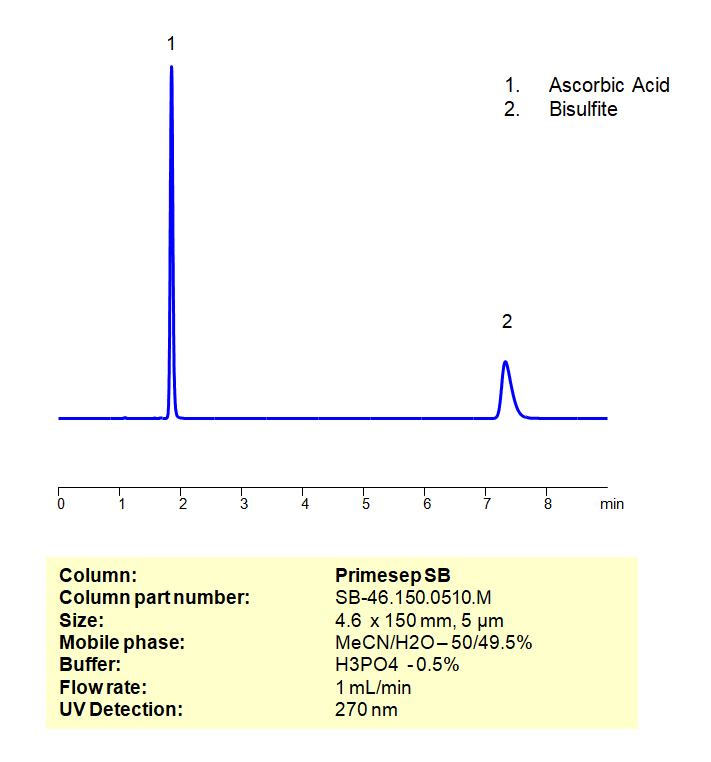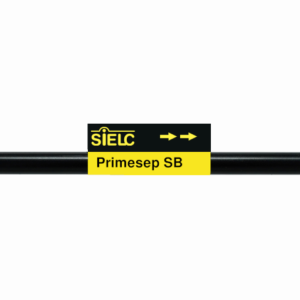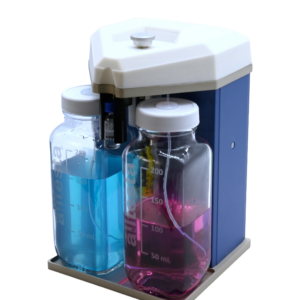HPLC Method for Analysis of Ascorbic Acid, Sodium metabisulfite on Primesep SB by SIELC Technologies
High Performance Liquid Chromatography (HPLC) Method for Analysis of Ascorbic Acid, Sodium metabisulfite
*The metabisulfite ion (S2O52−) is hydrolyzed to bisulfite (HSO3−) in water. Sodium metabisulfite is a white crystalline or powder solid. It has many uses, but some of it’s more prominent are: as the source of SO2 in wine, as a bleaching agent in the production of Coconut cream, and added to anesthetic solutions to prevent oxidation to improve the shelf life of the solution. Ascorbic is found naturally in citrus fruits and many vegetables. As a medication, it is used to prevent or treat low levels of vitamin C, since it is that vitamin. Vitamin C is needed to maintain the health of skin, cartilage, teeth, bone, and blood vessels. Ascorbic Acid and Sodium Metabisulfite can be separated, retained, and analyzed on a Primesep SB mixed-mode stationary phase column using an isocratic analytical method with a simple mobile phase of water, Acetonitrile (MeCN), and a phosphoric acid (H3PO4) buffer. This analysis method can be detected in the UV 270 nm.
| Column | Primesep SB, 4.6 x 150 mm, 5 µm, 100 A |
| Mobile Phase | MeCN/H2O – 50/49.5% |
| Buffer | H3PO4 – 0.5% |
| Flow Rate | 1.0 ml/min |
| Detection | UV, 270 nm |
| Class of Compounds | Acid, Hydrophilic, Ionizable, Disinfectant, Antioxidant, Preservative agent. |
| Analyzing Compounds | Ascorbic Acid, Sodium metabisulfite |
Application Column
Primesep SB
Column Diameter: 4.6 mm
Column Length: 150 mm
Particle Size: 5 µm
Pore Size: 100 A
Sodium metabisulfite






